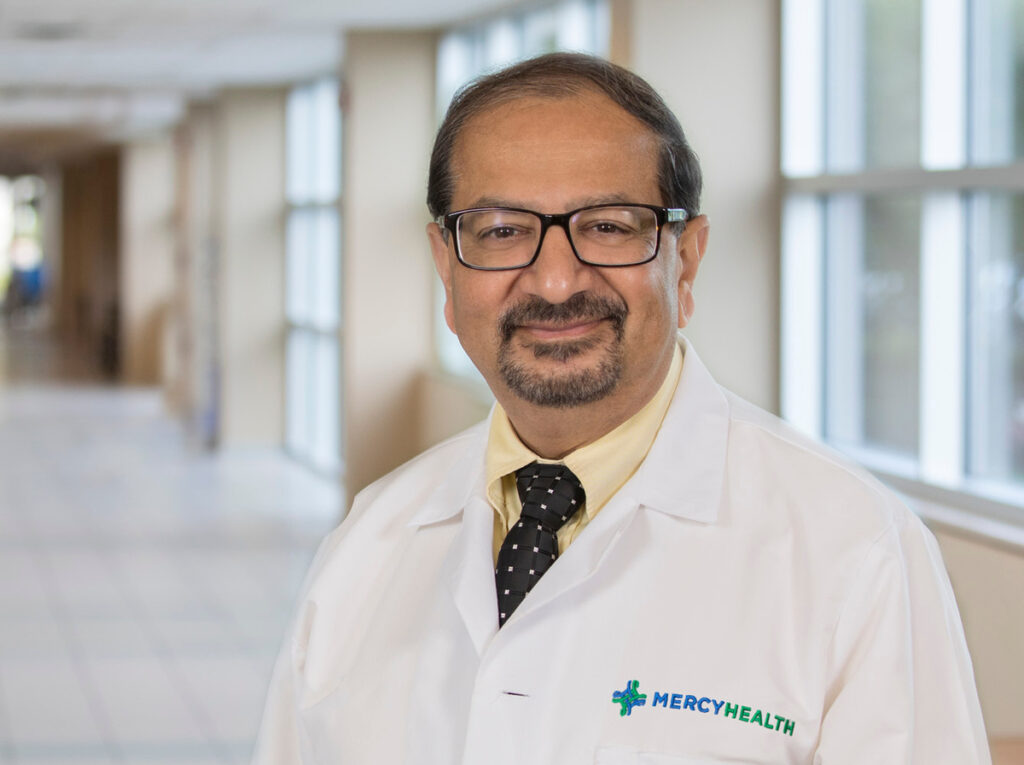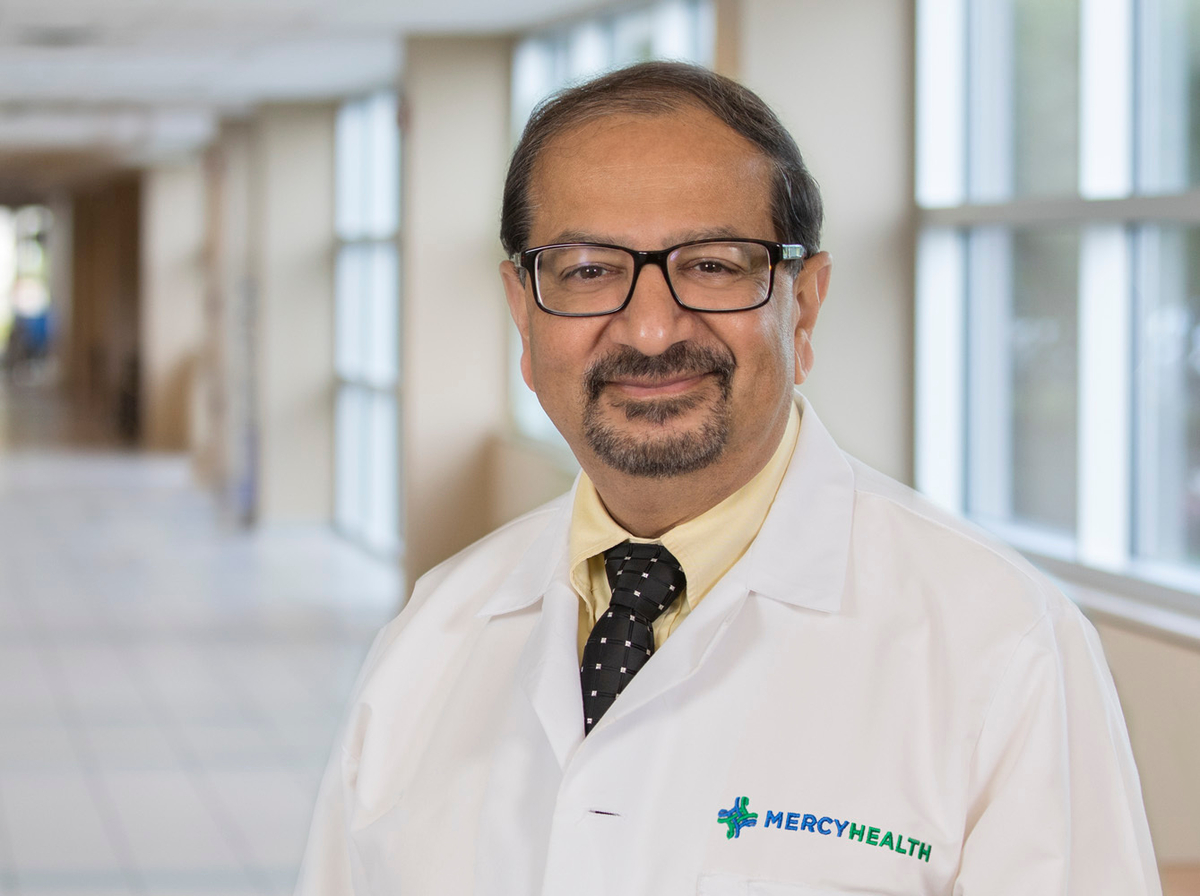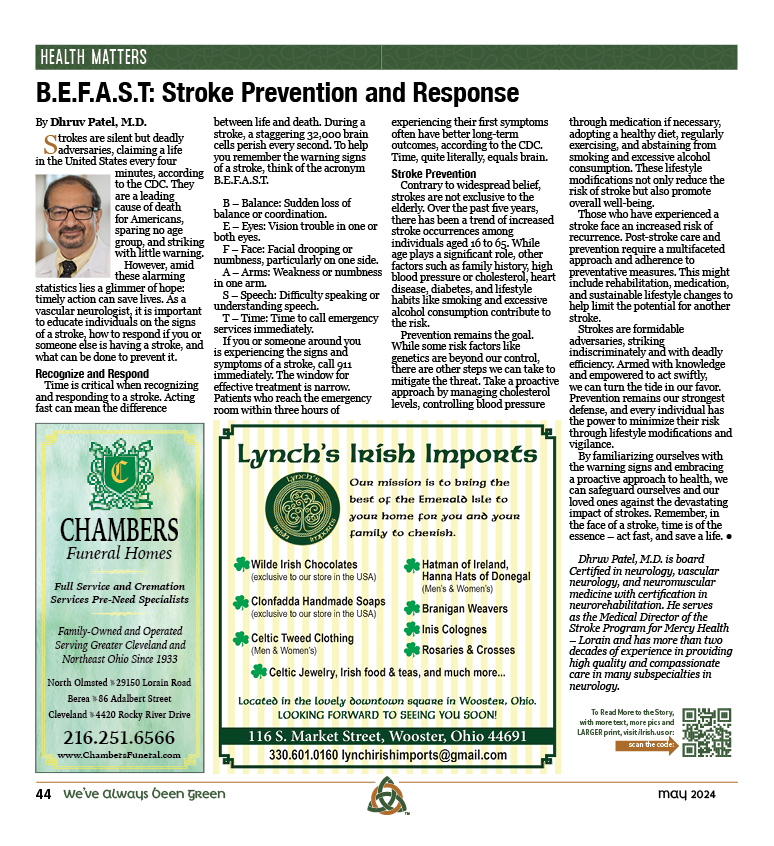

By Dr. Druv Patel
Strokes are silent but deadly adversaries, claiming a life in the United States every four minutes, according to the CDC. They are a leading cause of death for Americans, sparing no age group, and striking with little warning.
However, amid these alarming statistics lies a glimmer of hope: timely action can save lives. As a vascular neurologist, it is important to educate individuals on the signs of a stroke, how to respond if you or someone else is having a stroke, and what can be done to prevent it.
Recognize and Respond
Time is critical when recognizing and responding to a stroke. Acting fast can mean the difference between life and death. During a stroke, a staggering 32,000 brain cells perish every second. To help you remember the warning signs of a stroke, think of the acronym B.E.F.A.S.T.
B – Balance: Sudden loss of balance or coordination.
E – Eyes: Vision trouble in one or both eyes.
F – Face: Facial drooping or numbness, particularly on one side.
A – Arms: Weakness or numbness in one arm.
S – Speech: Difficulty speaking or understanding speech.
T – Time: Time to call emergency services immediately.
If you or someone around you is experiencing the signs and symptoms of a stroke, call 911 immediately. The window for effective treatment is narrow. Patients who reach the emergency room within three hours of experiencing their first symptoms often have better long-term outcomes, according to the CDC. Time, quite literally, equals brain.
Stroke Prevention
Contrary to widespread belief, strokes are not exclusive to the elderly. Over the past five years, there has been a trend of increased stroke occurrences among individuals aged 16 to 65. While age plays a significant role, other factors such as family history, high blood pressure or cholesterol, heart disease, diabetes, and lifestyle habits like smoking and excessive alcohol consumption contribute to the risk.
Prevention remains the goal. While some risk factors like genetics are beyond our control, there are other steps we can take to mitigate the threat. Take a proactive approach by managing cholesterol levels, controlling blood pressure through medication if necessary, adopting a healthy diet, regularly exercising, and abstaining from smoking and excessive alcohol consumption. These lifestyle modifications not only reduce the risk of stroke but also promote overall well-being.
Those who have experienced a stroke face an increased risk of recurrence. Post-stroke care and prevention require a multifaceted approach and adherence to preventative measures. This might include rehabilitation, medication, and sustainable lifestyle changes to help limit the potential for another stroke.
Strokes are formidable adversaries, striking indiscriminately and with deadly efficiency. Armed with knowledge and empowered to act swiftly, we can turn the tide in our favor. Prevention remains our strongest defense, and every individual has the power to minimize their risk through lifestyle modifications and vigilance.
By familiarizing ourselves with the warning signs and embracing a proactive approach to health, we can safeguard ourselves and our loved ones against the devastating impact of strokes. Remember, in the face of a stroke, time is of the essence – act fast, and save a life.





Dhruv Patel, M.D. is board Certified in neurology, vascular neurology, and neuromuscular medicine with certification in neurorehabilitation. He serves as the Medical Director of the Stroke Program for Mercy Health – Lorain and has more than two decades of experience in providing high quality and compassionate care in many subspecialties in neurology.
ends


Monthly newsmagazine serving people of Irish descent from Cleveland to Clearwater. We cover the movers, shakers & music makers each and every month.
Since our 2006 inception, iIrish has donated more than $376,000 to local and national charities.
GET UPDATES ON THE SERIOUS & THE SHENANIGANS!